American Meteorological Society's NYC / Long Island Chapter Seminar
The American Meteorological Society's NYC/Long Island Seminar Series, sponsored by Columbia University's Fu Foundation School of Engineering and Applied Science, meets once or twice a year and features prominent researchers in the field.
Columbia University makes every effort to accommodate individuals with disabilities. If you require disability accommodations to attend an event at Columbia University, please contact the Office of Disability Services at 212.854.2388 or [email protected].
2018
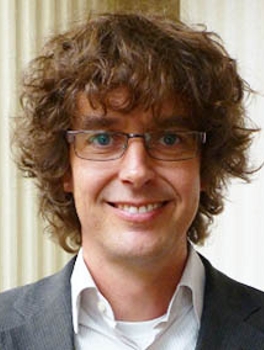 Stefan Brönnimann Oeschger Centre for Climate Change Research, Chair of Climatology & Managing Director, Institute of Geography, University of Bern
Stefan Brönnimann Oeschger Centre for Climate Change Research, Chair of Climatology & Managing Director, Institute of Geography, University of Bern
"Learning From Past Weather"
Wednesday, March 28, 2018 6:30 PM, Davis Auditorium, 412 CEPSR
Climate change is more than an increase in mean temperature. What affects most of us more strongly is the change in weather, in the frequency or intensity of extreme events. As extreme events are rare, long records are needed. Since decades, reconstructions of past climate have helped us to better understand how the climate system works and why climate varies. Likewise, weather reconstructions now help us to understand weather variations. Progress in data assimilation today allows reconstructing the global atmosphere (termed reanalysis) with only sparse surface observations. Such observations are uncovered in recent data rescue efforts. Using regional models, a global reanalysis can be further downscaled to the local scale. The output can be used to drive impact models, whose output can then be compared with historical documents. In this presentation I will describe the methods to reconstruct past weather on a global and local scale based on data rescue efforts, reanalyses, and numerical downscaling. I will present examples of past extreme events reaching back to the 18th century, and examples of impact modeling. The new approaches also re-value the use of historical documentary data for climate science and lead to a new collaboration between historians and scientists.
Hosts: Lorenzo Polvani and Michael Previdi
2017
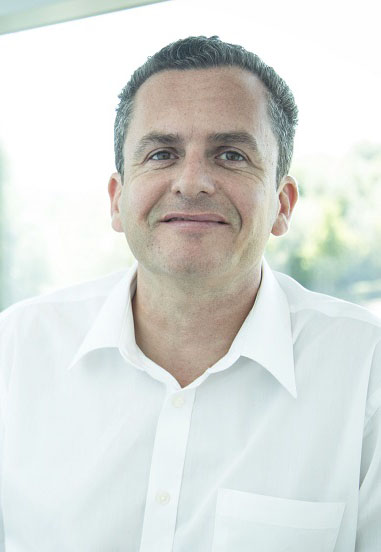 Adam Scaife Met Office Hadley Centre & Hon. Prof. Exeter University
Adam Scaife Met Office Hadley Centre & Hon. Prof. Exeter University
"Bridging the gap between weather forecasts and climate change projections"
Thursday, April 13, 2017 6:30 PM, Davis Auditorium, 412 Schapiro Center
Abstract: Weather forecasts and climate projections have matured scientifically to the point where they now deliver a multitude of regular services but the availability of skillful predictions for the timescale in between, from months to a few years ahead, is much more limited. Nevertheless, there would be great benefit to society if skillful predictions were possible, as many government and private business users assess risk and make plans on this timescale. While long range forecasts for the tropics have been established for many years, studies have suggested that it may not be possible to provide anything more than a broad range of plausible impending climate states for many other regions due to the apparent dominance of internal and unpredictable climate variability. Here we show recent seasonal and decadal prediction results from the Met Office Hadley Centre. Unlike climate projections which rely only on boundary forcing, or weather forecasts which rely only on initial conditions, these predictions are made using a new state-of-the-art high resolution climate model which is both forced with boundary conditions (e.g. greenhouse gases) and initialized with latest observations (in the atmosphere, ocean and land surface). Significant and potentially useful long range forecast skill is demonstrated, even for the extratropics in some seasons. We describe some of the predictable factors and mechanisms by which this comes about and describe some of the emerging services that will help to bridge the gap between future weather and climate services.
Biography: Adam Scaife is head of Monthly to Decadal Prediction at the Met Office which includes the research, production and issuing of climate predictions from months to a few years ahead. These ensemble climate predictions and the research behind them helps contingency planners in the UK and abroad to deal with impending climate variability and change. Adam's personal research is focused on climate variability and computer modelling of the climate. He has published more than 100 peer reviewed articles on mechanisms of climate variability and predictability and their simulation in physically based computer models. His research group recently made an important breakthrough in seasonal forecasting for winter. Adam has led the Monthly to Decadal Prediction Group since 2008 after spending 5 years leading a smaller team of scientists investigating climate variability. He has over 20 years experience in climate modelling and climate prediction. His recent studies help to clarify what caused changes in European climate from cold blocked winters in the 1960s to the mild wet winters of the 1990s, as well as year-to-year effects from El Niño, the stratosphere and other sources of predictability. Adam successfully simulated the Quasi-Biennial Oscillation using parameterized gravity waves for the first time in the Met Office’s climate model and his work has reduced some of the major errors in climate model simulations of the atmosphere - for example in reducing the errors in atmospheric 'blocking'. He also demonstrated with colleagues that the Brewer-Dobson circulation and the associated mass transfer across the tropopause is expected to increase under climate change. Adam has played a leading role in international projects and scientific steering groups and his key contributions have been recognized by a number of external awards.
Hosts: Lorenzo Polvani and Michael Previdi
2016
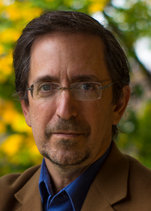 Andrew Revkin Senior Fellow for Environmental Understanding, Pace University
Andrew Revkin Senior Fellow for Environmental Understanding, Pace University
"Is the New Communication Climate Good for the Earth's Climate?"
Wednesday, April 27, 2016 6:30 PM, Davis Auditorium, 412 Schapiro Center
Abstract: Prize-winning science journalist, online communicator, and author Andrew Revkin explores issues and opportunities arising as both the environment and the media experience an era of unprecedented and unpredictable change. In his thirtieth year writing on the human relationship to the climate system, Revkin sees great opportunities for making information matter, both within traditional journalism and using an expanding array of communication pathways. But success depends on abandoning old norms, including norms for how people learn both how to share and assess news and information.
Biography: Andrew Rekvn is an American science and environmental journalist, author and educator. He has written on a wide range of subjects including destruction of the Amazon rain forest, the 2004 Asian tsunami, sustainable development, climate change, and the changing environment around the North Pole. He is the founding director of the Initiative on Communication and Sustainability at The Earth Institute of Columbia University. Previously he was strategic adviser for environmental and science journalism at National Geographic Society. Through 2017 he was senior reporter for climate change at the independent investigative newsroom ProPublica. He was a reporter for The New York Times from 1995 through 2009. In 2007, he created the Dot Earth environmental blog for The Times. The blog moved to the Opinion Pages in 2010 and ran through 2016. From 2010 to 2016 he was also the Senior Fellow for Environmental Understanding at Pace University. He is also a performing songwriter and was a frequent accompanist of Pete Seeger.
Hosts: Lorenzo Polvani and Jimmy Booth
2014
 Heini Wernli ETH Zurich, Switzerland
Heini Wernli ETH Zurich, Switzerland
"How well do we understand and can we predict extreme weather associated with extratropical cyclones?"
Thursday, November 13, 2014 6:30 PM, Davis Auditorium, 412 Schapiro Center
Abstract: In large parts of the extratropics, severe weather in the form of very intense rainfall, snowstorms and strong surface winds is associated with the passage of cyclones and their attendant fronts. These extratropical cyclones are everyday features on surface weather charts, but their detailed structure and evolution, and the involved physical processes all reveal a fascinating degree of case-to-case variability. As an effect, there is also a huge variability in the effects of cyclones with only a few of them causing extreme weather and high socioeconomic impact. In this seminar I will present first a selection of North American case studies to illustrate the linkage between cyclone lifecycles and extreme weather, and then discuss a selection of studies that tried to identify the physical ingredients that distinguish high impact cyclones from normal ones. The main conclusions will be that (i) variability is huge - there is not a single type of cyclone that can produce extreme weather, (ii) scale interactions are very important, in particular linkages between atmospheric water vapor transport, cloud formation, latent heating and atmospheric dynamics, and (iii) there are prediction issues on all scales, ranging from Rossby wave dynamics to cloud microphysics. In the outlook, I will emphasize the need for fundamental research to further improve the process understanding of atmospheric flow systems, and the key role in this undertaking of international field experiments and other forms of collaboration.
Hosts: Lorenzo Polvani and Jimmy Booth
_______________________________________
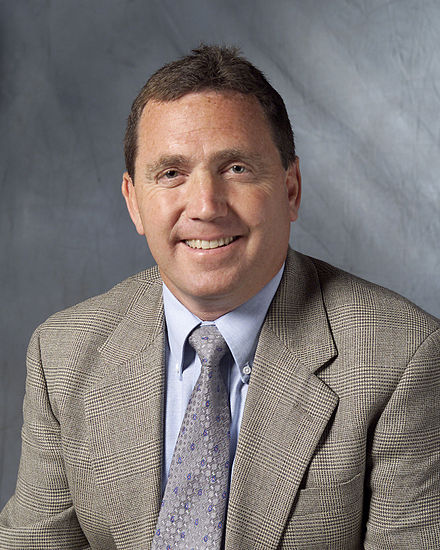 B.D. Santer Program for Climate Model Diagnosis and Intercomparison, Lawrence Livermore National Laboratory
B.D. Santer Program for Climate Model Diagnosis and Intercomparison, Lawrence Livermore National Laboratory
"A Life in Climate Science: From Identification of a “Discernible Human Influence” on Climate to Identification of the “Top Ten” Climate Models"
Thursday, February 20, 2014 6:30 PM, Davis Auditorium, 412 Schapiro Center
Abstract: Human-caused climate change is not a hypothetical future event. It is real, and we are experiencing it in our lifetimes. Despite compelling evidence of human effects on global climate, there is a continuing need for scientists to explain “how we know it’s us”. The first part of my talk will briefly summarize the scientific underpinning for “discernible human influence” conclusions of the Intergovernmental Panel on Climate Change and U.S. National Academy of Sciences. The focus will be on so-called “fingerprint” studies, which seek to identify a model-predicted pattern of anthropogenic climate change in observational records. The message from such fingerprint research is that observed changes in a number of different (and independently-measured) aspects of the climate system cannot be explained by natural causes alone.
Studies of the causes of climate change frequently rely on complex numerical models of the climate system. Such models are the only tools we have for attempting to understand the size (and geographical and seasonal distribution) of the climate changes we are likely to experience over the 21stcentury. But not all models show equal skill in capturing key features of present-day climate. Should models with higher skill in reproducing today’s climate be regarded as more trustworthy predictors of 21stcentury climate change? Is it easy to identify the “top 10” climate models in the world? How should decision-makers – and scientists interested in studying the impacts of climate change – use and interpret information on the strengths and weaknesses of different climate models? Can we find clever ways of reducing uncertainties in projections of future climate change? These are a few of the questions that will be addressed in the second part of my talk.
Bio: Ben Santer is an atmospheric scientist at Lawrence Livermore National Laboratory (LLNL). His research focuses on such topics as climate model evaluation, the use of statistical methods in climate science, and the identification of natural and human “fingerprints” in observed climate records. Santer’s early research on the climatic effects of combined changes in greenhouse gases and sulfate aerosols contributed to the historic “discernible human influence” conclusion of the 1995 Report by the Intergovernmental Panel on Climate Change (IPCC). His recent work has attempted to identify human fingerprints in a number of different climate variables, such as tropopause height, atmospheric water vapor, the temperature of the stratosphere and troposphere, ocean heat content, and ocean surface temperatures in hurricane formation regions.
Santer holds a Ph.D. in Climatology from the University of East Anglia, England. After completion of his Ph.D. in 1987, he spent five years at the Max-Planck Institute for Meteorology in Germany, where he worked on the development and application of climate fingerprinting methods. In 1992, Santer joined LLNL’s Program for Climate Model Diagnosis and Intercomparison (PCMDI).
Santer served as Convening Lead Author of the climate-change detection and attribution chapter of the 1995 IPCC report. His awards include a MacArthur Fellowship (1998), the U.S. Department of Energy’s E.O. Lawrence Award (2002), and membership in the U.S. National Academy of Sciences (2011). He enjoys rock-climbing, mountaineering, and exploring the beautiful state of California with his wife and son.
Hosts: Lorenzo Polvani and Jimmy Booth
2013
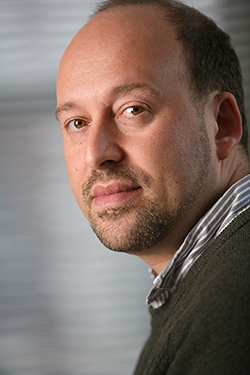 Gavin Schmidt Climate Scientist and Deputy Director, NASA Goddard Institute for Space Studies
Gavin Schmidt Climate Scientist and Deputy Director, NASA Goddard Institute for Space Studies
"What are climate models good for?"
October 24, 2013, 7:00pm, Columbia University, Davis Auditorium, 412 Schapiro Center
Bio: Gavin Schmidt is a climate scientist and deputy director of the NASA Goddard Institute for Space Studies in New York, where he studies past, present, and future climates. Schmidt was cited by Scientific American as one of the 50 leading researchers of 2004 and has been a contributing author and reviewer for the Intergovernmental Panel on Climate Change. He is a co-founder and contributing editor of RealClimate.org, which provides context and background on climate science issues that are missing in popular media coverage. He co-authored "Climate Change: Picturing the Science" published by W. W. Norton in 2009 and was the inaugural recipient of the AGU Climate Communications Prize in 2011. He tweets at @ClimateOfGavin
Hosts: Lorenzo Polvani and Philip Orton
_______________________________________
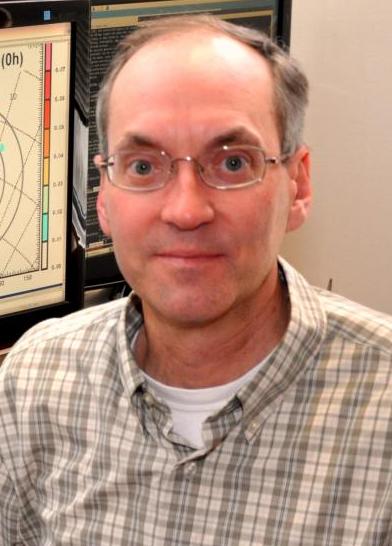 James Doyle Head, Mesoscale Modeling Section, Naval Research Laboratory
James Doyle Head, Mesoscale Modeling Section, Naval Research Laboratory
"Predictability of Tropical Cyclones – Perspectives from Sandy and Irene"
January 31, 2013 6:30 PM, Columbia University, Davis Auditorium, 412 Schapiro Center
Bio: James Doyle is the head of the Mesoscale Modeling Section of the Marine Meteorology Division of the Naval Research Laboratory, and a Fellow of the American Meteorological Society (AMS). He has been recognized for his contributions to the science of mountain meteorology and mesoscale predictability, significant scientific advancement in our understanding of terrain-induced gravity waves, micro-structure of leeside rotors, numerical methods, and adjoint-based mesoscale predictability. He has served in leadership roles in several field projects, and is an accomplished modeler as the chief scientist for the Navy's Coupled Ocean/Atmosphere Mesoscale Prediction System (COAMPS), as well as its tropical cyclone version (COAMPS-TC) that has been one of the best-performing hurricane intensity forecast models over the last several seasons, including particularly accurate forecasts for Irene and Sandy.
Hosts: Lorenzo Polvani and Philip Orton
2012
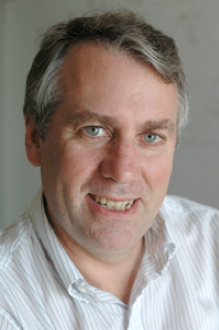 Kerry Emanuel Professor of Atmospheric Science, Massachusetts Institute of Technology
Kerry Emanuel Professor of Atmospheric Science, Massachusetts Institute of Technology
"Assessing Storm Surge Risk at New York City"
November 15, 2012 6:30 PM, Davis Auditorium, 4th floor CEPSR
Bio: Prof. Emanuel is member of the National Academy of Sciences, and winner of the Carl Gustaf Rossby Research Medal from the American Meteorological Society, its highest honor. He is most well-known for his work on ocean heat and tropical cyclones, and more recently on relating this to climate change. He is currently primarily working on various aspects of moist convection in the atmosphere, and on tropical cyclones. He is interested in fundamental properties of moist convection, including the scaling of convective velocities and the nature of the diurnal cycle of convection over land. His group has developed a promising technique for inferring tropical cyclone activity from coarse-grain output of climate models or re-analyses.
Hosts: Lorenzo Polvani and Philip Orton
